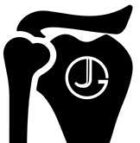Are you experiencing pain when you lift your arm above your head? Are you finding it difficult to sleep at night because your shoulder is aching? If so, you may have shoulder impingement.
Shoulder impingement is a term that we use when you have symptoms of pain that are generated when the rotator cuff tendons are compressed or ‘impinged” in a narrow bony gap in the shoulder, called the subacromial space. The repetitive pinching of the tendons leads to degeneration and irritation of the tendons (known as tendinopathy), as well as inflammation of the bursa (a gristly, fluid filled sac designed to cushion the tendons).

The majority of shoulder impingement is caused when there’s a problem with the mechanics of the way that the shoulder is moving. The shoulder is a complex joint, and when you’re lifting your arm above you head, the movement comes from two main areas. Firstly, the shoulder blade (a.k.a. scapula, which houses the socket part of the ball and socket joint) rotates upwards, and then the head of the humerus (the ball part of the joint) rotates to further lift the arm.
If the muscles that move the scapula aren’t coordinated or strong enough to do this well, then when the arm is being lifted, the subacromial space (the gap between the top of the humerus, or arm bone, and the upper outer tip of the shoulder blade called the acromion) becomes narrowed, and the tendons and bursa become ‘impinged’. Generally speaking, good rehab such as physiotherapy and osteopathy will enable you to overcome this problem.
Another cause for shoulder impingement is that sometimes, we are born with shoulder bones that are shaped in such a way that it predisposes us to more frequent impingement.
Mostly the diagnosis of shoulder impingement is gained from clues in your history and examining your shoulder and looking at your X-ray. Sometimes an MRI or ultrasound scan is needed to rule out other conditions and to see the extent of the problem within the tendons.
Mostly the diagnosis of shoulder impingement is gained from clues in your history and examining your shoulder and looking at your X-ray. Sometimes an MRI or ultrasound scan is needed to rule out other conditions and to see the extent of the problem within the tendons.
How is shoulder impingement treated?
The good news is that most patients won’t require an operation for this problem, but it can be a slow recovery. Rehabilitation therapy such as physiotherapy or osteopathy will seek to correct the movement patterns within the shoulder and strengthen the muscles, which is very important. Sometimes if the bursa is very irritated, your rehabilitation may be limited due to pain, and it may be difficult to recover without help. In these instances, an ultrasound guided injection of steroid may be recommended to kick start your recovery.
If your shoulder pain still doesn’t resolve then very occasionally, surgery may be needed. This is usually carried out as a day case ‘keyhole’ procedure (and is called an arthroscopy). During the surgery, more space may be made within the tight subacromial space by safely and carefully shaving the bony edges (called a ‘Decompression’), sometimes the bursa is removed (called a ‘Bursectomy’) and sometimes surgery is carried out to try to improve the blood supply and hence health of the rotator cuff tendons.
The benefits of the surgery take time to come to fruition, and it will take several months before you can expect a full recovery.

